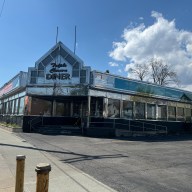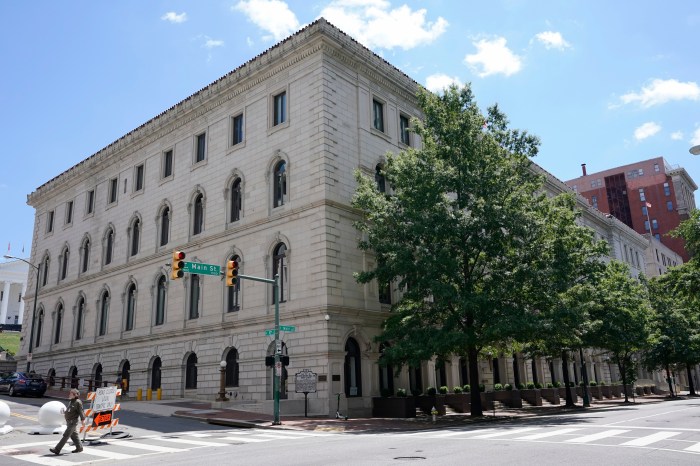By Gary Buiso
It was déjà vu all over again at Community Board 6, when the board again voted overwhelmingly to reject a project seeking to convert a landmark bank building and its adjacent parking lot into residential housing. With one abstention, the board voted unanimously against the conversion of Independence Community Bank, 130 Court Street building into a six-story residential complex with ground floor retail stores. Last April, the community board resoundingly turned down a different version of the project, which at the time called for the construction of a seven story building. The proposed building exceeds the 50-foot height restriction imposed by the Cobble Hill Historic District. “Once you go over, you go over,” said Robert Levine, Land Use/Landmarks Committee co-chair. Levine said the project’s design runs counter to board member’s aesthetics. “It looks like a shopping mall,” he said. The developer, Two Trees Management, will next take its case to the Landmarks Preservation Commission on Jan. 24. The commission will determine the appropriateness of the design, and later, issue a report to the City Planning Commission, which also must review the project. The community board’s vote is strictly advisory. “We’re glad to have had the opportunity to discuss our project with the community board and we look forward to having a public hearing before Landmarks later this month,” said Michael Armstrong, the bank’s director of public relations. Independence Community Bank is in negotiations to sell the property to Two Trees. If the project moves ahead, the bank would move temporarily to a nearby Two Trees property and then back to the banking floor of the historic building. The bank will buy back its original floor, owning it as a commercial condominium space, Armstrong said. Asked about the height of the project, Armstrong said he had no comment. “It isn’t our architect, it isn’t our plan,” he said. That being said, Armstrong said, the project is “terrific,” and will add life to Atlantic Avenue. Two Trees’ representative Laura Cheng has said the project’s architect, Michael Wetstone of Beyer Blinder Belle, has “worked hard to accommodate” the community’s concerns. She said lowering the height to fit within the requirements of the special district is not feasible, and renders the project, “not viable.” If the project proceeds, the apartments will be rentals, with the possibility of a number of units being priced affordably. “We have a strong sensitivity to the historic district, and I think there was great care to create a design both contemporary, respectful and responsive to the historic neighborhood,” Cheng recently said.
































